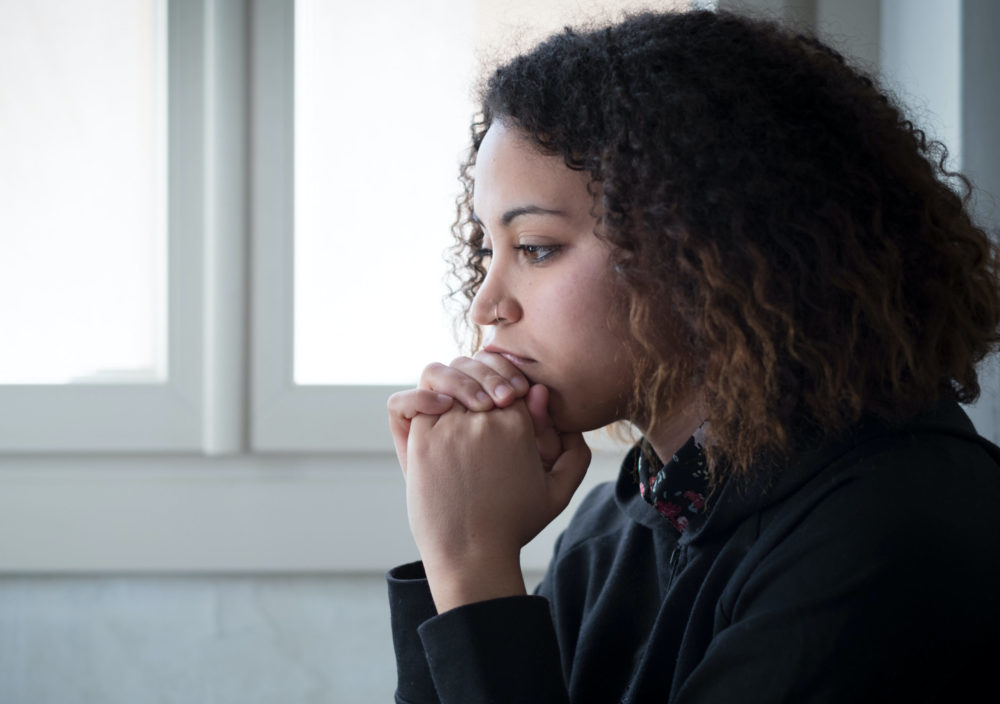Reconnect. Recover. Reimagine. That’s what we need to do in our classrooms around the country as we re-engage in learning and ready ourselves to support all students this year. Social emotional learning has never been more important than it is right now. This is a commitment we can make for the first 30 days of school before we get to academics no matter what school looks like when we reopen.
When schools closed suddenly in March due to the Covid-19 pandemic, students were robbed of their daily experiences of interacting with their peers, teachers and school community. Families were disconnected from support systems and faced financial instability. Districts, administrators, and educators faced the daunting task of quickly figuring out just how to do online learning. This in and of itself was a trauma and as the virus continues to spread, killing over 160,000 Americans without an end in sight, we continue to endure fear and stress on a daily basis.
On May 25, 2020, George Floyd was killed in police custody when a white police officer knelt on his neck for 8 minutes and 46 seconds. More trauma. The outcry over racial injustice was swift and long lasting with people of all races, faiths, ages, and backgrounds protesting police brutality and bringing the Black Lives Matter movement to the forefront.
Because schools were closed, students did not have the support of teachers, counselors and support staff to foster discussion and share feelings on systemic racism and the unjust killing of Black Americans. As a result, students have a greater need for social emotional learning and mental health support now than perhaps at any other moment in history.
Reconnection is Essential
Going back to school with a business as usual outlook is not an option. When we return to school we have to reconnect. All of us. Students need to reconnect with their peers and teachers. Teachers with their peers, students, families and administrations. Administrators and districts with their staff, students, and families. There has to be a genuine investment in this reconnection and ample time to foster it.
 Students have a greater need for social emotional learning and mental health support now than perhaps at any other moment in history.
Students have a greater need for social emotional learning and mental health support now than perhaps at any other moment in history.
Key practices will include allowing everyone to express their emotions and share their stories from March through the present time. Everyone will have to actively listen to others and respond with empathy, compassion and grace. Schools and districts should ask students and families what they need to be engaged and successful going forward. Staff and students of color should be able to share their experiences in the context of racism with others even if it makes others uncomfortable. Especially if it makes others uncomfortable.
One activity that can be used to foster awareness of identity and connections to others is “Exploring Community History and Cultural Influence” from Teaching Tolerance. If every human being in your school engages in this activity, it validates everyone’s importance, identity and culture.
This authentic connection to oneself is a part of the larger reconnection process to others and the community. From there, we need to create spaces for sharing interests, concerns, passions and fears to bring us together.
How We Recover
We can help our students recover from the trauma they have been experiencing by normalizing sharing and discussion of emotions, authentically, in a safe space. This includes adults who can model the competencies of self-awareness and self- management as they do so for their students. Students and staff need to be asked explicitly how they feel about Covid-19 and Black Lives Matters.
Conversations can work well in connection building circles, as well as be gathered non-verbally with surveys or tools in staff meetings and classrooms. I use colored rubber bracelets to help us share how we are feeling, without judgement, on a daily basis.
 Wendy Turner
Wendy Turner
Learn more in “Rubber Bracelets to Support Emotional Regulation." The process should always be voluntary, students and staff should never be forced to share how they feel but it is essential for them to know they can when they are ready to do so. Sharing helps create empathetic relationships between and among students and staff.
Students and staff often use just four main emotions to describe how they are feeling: happy, mad, sad and scared but the emotions they experience are much more complex and nuanced. It is critical for us to help build our students emotional vocabulary during the reconnection process as well.
“Your Emotional Vocabulary List” by Karla McLaren provides many examples of emotions that are subsets of anger, happiness, fear, sadness. Happiness can be felt as calm, joy, excitement, friendly or hopeful. Anger can mean afraid, alarmed, furious, fearful, or horrified. Fear encompasses so many ideas: some are dread, nervousness, pensive, unnerved, worried or uneasy.
Sadness includes depressed, downtrodden, sorrowful, melancholy, bleak and morose just to name a few. Build and increase your own emotional vocabulary in advance of doing so for your staff and students. Learn how to model sharing of emotions in real time, as they arise, for your students so you can show them authentically how to do the same.
Language and strategies for self-regulation are also essential tools for the classroom. Barbara Gruener offers “When Anxiety Attacks: 12 Tools” for coping and handling difficult moments. Her practical advice includes facing fears and discomfort using physical and therapeutic strategies for empowering adults and students to be brave and calm with methods that work for them.
Reimagining Schools
Finally, we need to reimagine the education experience for students, particularly our students of color. For too long, Black and brown students have been over-represented in behavior data, such as the number of suspensions, as they have struggled to connect to and succeed in school environments. Many have attended schools that are not as well resourced or maintained as schools where a majority of white students learn.
Everything from dress code policies to curriculum to whitewashed history lessons and educator bias and microaggressions diminishes students of color. It’s time to change that for good. Pirette McKamey articulates that we need to view the success of our black students as essential to the success of our own teaching in “How to Be An Anti-Racist Teacher”.
The state of Georgia requested a waiver from high-stakes testing this year so they can focus on remediation, growth, and the safety of students. When we return to school, listen to students share what they like best, what makes them uncomfortable, what they need, how they can feel valued and successful at school and how they would like to be treated. Authentically let them answer, take note of their ideas, and work to incorporate them into your classrooms and schools so students feel like they are a key component of the evolution and reimagination of schools. They will dazzle us with their answers, they will solve problems for us, and it will be worth it.
But we must listen to student voices. This is an absolutely critical step for us as we work to: Reconnect. Recover. Reimagine. Start planning for these priorities today.
Wendy Turner, M. Ed. is an award-winning 2nd grade teacher at Mt. Pleasant Elementary School in Wilmington, Delaware. Deeply committed to social-emotional learning, she guides her students to embody respect, empathy, resilience, citizenship, and growth mindset through dynamic classroom experiences. The 2017 Delaware Teacher of the Year, Wendy is a regular contributor to education blogs and positive conversations about education on twitter. Find her on twitter @mrswendymturner.




